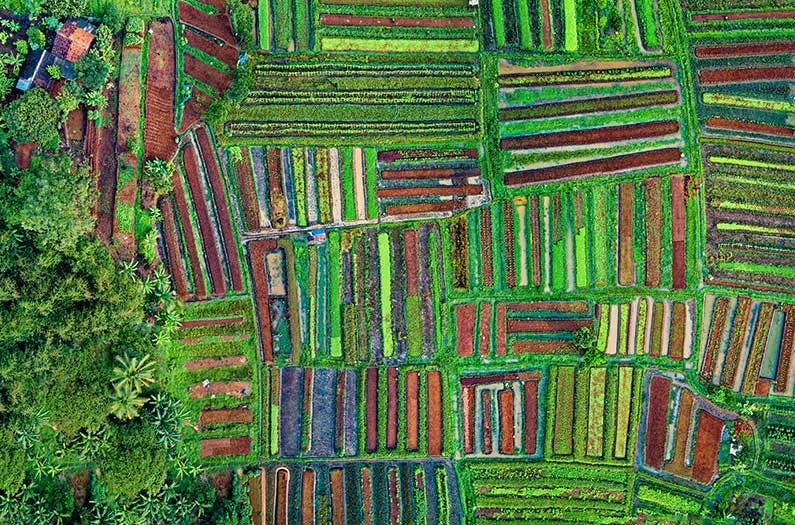loveMELT newsletter #004: Digging and Planning a Fruitful Future

Greetings Loved Ones
I’m SURE you all noticed I’m a bit late sending this monthly newsletter...but I moved last weekend. This is great news because it means more space for me to work creatively at home! Time to finish the artwork I’ve started.
Last month we pondered the role of data in our lives. Specifically, how it’s being used for certain agendas, against certain agendas, or not used at all...perhaps because it doesn’t fit in with certain agendas. I’d personally like for myself and my peers to use it knowledgeably rather than blindly let a select few handle all the data-based decision-making to build our future without our understanding.
Therefore, I started digging around for open data sets, databases, data visualization tools, and ways to learn about data analysis in general. I’m sharing useful resources with you so you can efficiently dive in too if you’d like. Or at least, you’ll be aware of them.
Why am I doing this? What does it have to do with my artwork?
My creativity tends to be stimulated by topics or issues I’m frustrated by or don’t fully grasp. I dive into research to ask questions and formulate a better understanding. My learning and process build into the resulting answer, an imaginative story, or a better question to contemplate. Thus, beginning an interesting conversation with the artworks’ audience (you).
I want my artwork to not only raise awareness around a topic but to empower my peers to take action if they wish. Openly sharing what I learn provides an opportunity for more of us to gain.
I’d like to better understand how to manipulate more digital tools around me so I can create work that connects and immerses us in diverse medium experiences.
I seek to knowledgeably collaborate with experts in ranging fields to bring questions, ideas, and concepts to life.
In my opinion, with the direction capitalism is headed, data literacy will become a necessary comprehension for a person to have a voice and maintain financial, political, governmental, cultural, and sustainable well-being. I presume it will become as important as learning how to read and write.
I look forward to seeing how my art evolves dimensionally over time as I still have a very tactile inclination in my creative expression.
So...in the midst of a crazy past month, here’s what I’ve surfaced so far.
1. For beginners, learn Excel for data analysis, not google sheets.
I’ve been informed, through this data fundamentals discussion (shout out to my friend Michael for sharing the event) that Sheets doesn’t have the same analytical capabilities Excel does.
So, I’ve started here: Excel for Business Analysts
My next course: Learning Data Analytics: 1 Foundations
If you don’t have LinkedIn Premium, check with your local library. Over the years, I’ve gained access to Linked In Learning (formerly Lynda) through my library membership.
2. While learning the basics of analytics, I also want to understand what data is publicly available and what free tools I can use to draw my own analysis based on the data, to create stories, and to practice visualizations. Here are some sources I’ve located.
Open Data Sets
Open Data Portals and Search Engines
3. So what about the fun part? The part where I get to turn the data into a visual story?
Free data visualization tools
4. Speaking of data visualizations, here are some interesting publications providing such:
5. Books recommended to me:
Naked Statistics - “stripping the dread from the data”
How Charts Lie - “getting smarter with data visualization”
Be Data Literate - “The data literacy skills everyone needs to succeed”
6. Books I’m reading:
Data Action - “using data for public good”
Data Feminism - “A new way of thinking about data science and data ethics that is informed by the ideas of intersectional feminism.”
Again, look into your library membership benefits. I’m able to download many free e-books and audiobooks using the library’s membership to apps such as Libby and OverDrive.
Speaking of long format reading, do you remember writing research papers and you had to cite reputable works at the end of the paper? We used academic repositories like JSTOR and Gale…FYI they still exist. Publicly, there is Google Scholar of course, but instead of always relying on Google to feed us answers and articles, here’s a list of...
Open-access, peer-reviewed research papers and journalistic databases
Other Deep Diving Projects and Reports
The Consilience Project - thanks to Oliver for sending me this site to check out
UN Sustainable Development Goals (SDGs) - shout out to Maxime at Global Fund for Coral Reefs
UN Human Development Reports - shout out to all the former colleagues that build the yearly report microsites
Okay, this is a LOT of information. All of this data learning will be achieved over time. My first priority is to finish the artwork I’ve started. Next month, I plan to give you some sneak peeks of works in progress and discuss my approach to the pieces. We’ll see what you think of it :)
P.S. I hit up the Affordable Art Fair on Friday to see some work...IN PERSON. I was struck specifically by the Tolman Collection of New York. The gallery showcases contemporary Japanese art. Two artists really roped me in. Ray Morimura with his woodblock prints and Noriko Saito with her drypoint etching.
Here’s a great video on traditional Japanese printmaking. The craftsmanship alone is incredibly inspiring.
And last, but certainly not least, inspired by springtime.
Apple music playlist: Filthy Flowers
See you at the park,
Sadie




